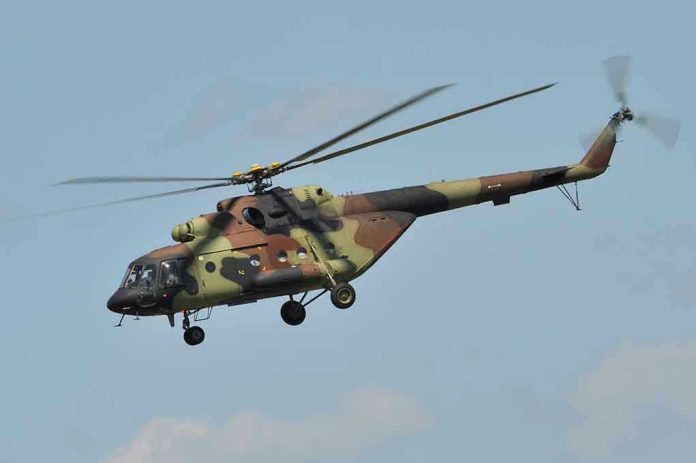
A helicopter crash near Joint Base Lewis-McChord has raised serious questions about military safety protocols.
Story Overview
- A military helicopter from JBLM crashed near Summit Lake, prompting an emergency response.
- Both military and civilian agencies are involved in the rescue and investigation efforts.
- The cause of the crash and any casualties remain unknown, pending investigation.
- The incident highlights potential issues in military aviation safety and coordination.
Immediate Aftermath of the Crash
A military helicopter from Joint Base Lewis-McChord crashed in a rural area near Summit Lake, approximately 35 miles west of the base. Emergency responders, both military and civilian, quickly mobilized to the scene. However, the investigation into the crash’s cause and the status of those aboard remains ongoing, with no immediate details on casualties or the helicopter model involved.
The crash near a significant military installation prompted a swift and large-scale emergency response. The Thurston County Sheriff’s Office was one of the first civilian agencies to report to the scene, coordinating efforts with military personnel despite challenges such as a fire at the crash site, which hindered immediate rescue operations. The investigation is primarily led by the military, with support from local agencies and the Federal Aviation Administration.
Historical Context and Safety Concerns
Joint Base Lewis-McChord is a crucial military hub in the Pacific Northwest, home to the 16th Combat Aviation Brigade. This unit operates various helicopters, including AH-64E Apache, CH-47 Chinook, and UH-60 Black Hawk models. The base supports both Army and Air Force missions, making it a vital point for military aviation. Previous incidents, such as the 2011 helicopter collision near JBLM, emphasize the inherent risks of military aviation, especially during training or night operations.
Clear weather conditions were reported at the time of the crash, suggesting that environmental factors were not a primary cause. This incident may lead to a reevaluation of flight safety protocols and training operations at JBLM and potentially across other military installations.
Ongoing Investigations and Implications
As the investigation unfolds, authorities are focused on recovering personnel and securing the crash site. The military’s leadership in the investigation reflects their control over the situation, while civilian agencies assist with public safety and logistical support. The lack of immediate information about casualties or the helicopter’s condition underscores the complexity of the situation.
🚨Beaking 📰🗞 | News Sep 2025
MH-60 helicopter from Joint Base Lewis-McChord crashes in wooded area near Summit Lake, 10 miles west of Olympia, WA, around 9 p.m. Sept. 17 during routine training; post-crash fire hampers rescue, overheating responders' gear. FAA and Army… pic.twitter.com/OI2Z63Mw6a
— Dailymindvirus (@dailymindvirus) September 18, 2025
The potential long-term implications include a review of military aviation safety protocols, which could affect training and operational readiness at JBLM. The incident has drawn attention to the coordination between military and civilian entities during emergencies, highlighting areas for improvement in response strategies. As more information becomes available, the focus will likely shift to addressing any identified safety issues and preventing future occurrences.
Sources:
iHeart/WHAS (with Fox News, USA Today references)






